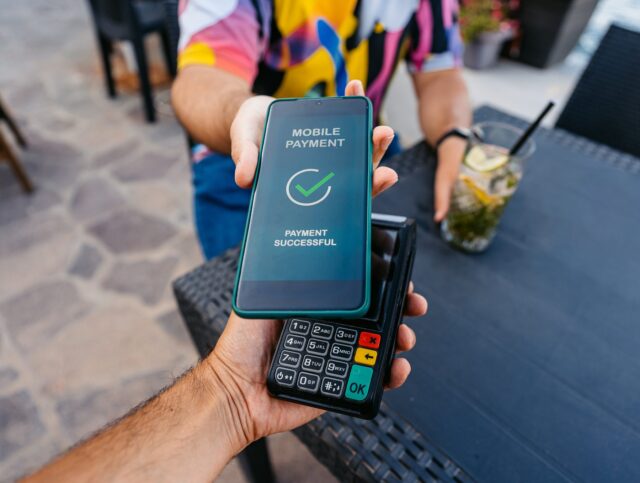In today’s fast-paced digital landscape, offering mobile payment options is no longer just a convenience—it’s a necessity. With more consumers shopping on their smartphones, integrating mobile payments can significantly enhance the user experience, increase conversions, and reduce cart abandonment. Here’s a step-by-step guide on how to set up mobile payment options on your e-commerce store.

Table of Contents
Toggle1. Choose the Right Mobile Payment Methods
The first step is to select the mobile payment methods that suit your business model and target audience. Some of the most popular mobile payment options include:
- Digital Wallets: Services like Apple Pay, Google Pay, and Samsung Pay allow users to pay quickly using their stored payment information.
- Credit and Debit Cards: Make sure you accept major credit and debit cards through mobile-friendly gateways.
- Third-party Payment Processors: Platforms like PayPal, Stripe, and Square offer user-friendly interfaces for mobile payments.
- Buy Now, Pay Later (BNPL): Services like Afterpay and Klarna allow customers to make purchases in installments, appealing to a broader audience.
2. Ensure Your E-commerce Platform Supports Mobile Payments
Most modern e-commerce platforms, such as Shopify, WooCommerce, and Magento, have built-in support for mobile payments. Check if your platform provides mobile-friendly payment options and integrations. If you’re using a custom-built solution, consult with your developer to ensure compatibility.
3. Set Up SSL Certification
Security is paramount when dealing with online transactions. Ensure your website has an SSL certificate to encrypt data transmitted between the user’s device and your server. This not only protects sensitive information but also boosts consumer confidence in your site.
4. Integrate Payment Gateways
Choose a reliable payment gateway that supports mobile payments and integrates seamlessly with your e-commerce platform. Here are a few popular options:
- Stripe: Known for its developer-friendly API, Stripe supports various payment methods, including mobile wallets.
- PayPal: A trusted name in online payments, PayPal offers mobile payment solutions with a straightforward integration process.
- Square: Ideal for small to medium-sized businesses, Square provides comprehensive tools for both in-person and online sales.
After selecting your payment gateway, follow the integration instructions provided by your e-commerce platform to set it up.
5. Optimize Your Checkout Process
A streamlined checkout process is essential for mobile users. Here are some tips to optimize your checkout experience:
- Minimize Form Fields: Only ask for essential information to complete the purchase. Use auto-fill options where possible to save time.
- Enable Guest Checkout: Allow users to complete purchases without creating an account to reduce friction.
- Display Mobile-friendly Payment Icons: Clearly show available payment methods during checkout to inform users of their options.
6. Test Your Mobile Payment Setup
Before going live, conduct thorough testing to ensure everything functions smoothly. Here are a few steps to consider:
- Test on Multiple Devices: Check your payment setup on various smartphones and tablets to ensure compatibility and responsiveness.
- Simulate Transactions: Perform test transactions using different payment methods to verify that everything processes correctly.
- Gather Feedback: If possible, have a few trusted customers try out the mobile payment process and provide feedback on their experience.
7. Monitor and Analyze Performance
After implementing mobile payment options, keep an eye on their performance. Use analytics tools to track conversion rates, cart abandonment rates, and user behavior. This data can provide insights into how well your mobile payment options are performing and where improvements might be needed.
8. Promote Your Mobile Payment Options
Once your mobile payment options are live, promote them through your marketing channels. Highlight the convenience of mobile payments in your emails, social media posts, and website banners. Offering exclusive promotions for mobile payments can also encourage users to take advantage of these options.
Conclusion
Setting up mobile payment options on your e-commerce store is crucial for staying competitive in today’s market. By selecting the right payment methods, optimizing your checkout process, and ensuring a seamless user experience, you can enhance customer satisfaction and boost your sales. Start integrating mobile payments today, and watch your e-commerce store thrive!


No responses yet